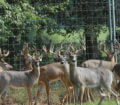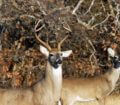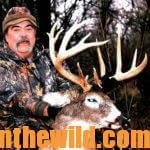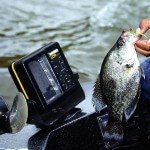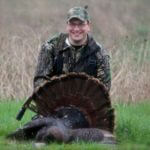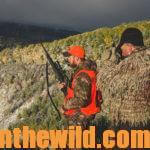Editor’s Note: Simply finding a deer trail won’t provide enough information to hang a tree stand and plan to hunt that trail. Many ingredients make some deer trails better than others. To effectively hunt trails, you need to know:
* why and when the deer use the trail;
* where the deer will go; and
* what time of day or night the deer will move down the trail.
With this information, you can hunt trails and take deer more productively than a hunter who simply finds a trail and hangs a tree stand. Let’s take a closer look at some different types of deer trails, and what you can learn from these trails to help you hunt deer more effectively.
 Deer use several different kinds of paths or trails – both obvious and inconspicuous. If you know what to look for and where to look, you can take a stand and drastically increase your ability to find and bag deer. Using trail cameras to photograph trails will let you know the times of day deer prefer which trails, although in years past hunters often strung 1-2-pound monofilament fishing line high enough across a trail that a raccoon or dog normally wouldn’t trip it, but a deer would. The hunters always removed that line, because monofilament would stay in the environment for some time.
Deer use several different kinds of paths or trails – both obvious and inconspicuous. If you know what to look for and where to look, you can take a stand and drastically increase your ability to find and bag deer. Using trail cameras to photograph trails will let you know the times of day deer prefer which trails, although in years past hunters often strung 1-2-pound monofilament fishing line high enough across a trail that a raccoon or dog normally wouldn’t trip it, but a deer would. The hunters always removed that line, because monofilament would stay in the environment for some time.
Surprisingly, often hunters found that trails in the woods like horse trails, hiking trails, snowmobile trails, etc. were the least productive to hunt – even though they might have numbers of deer tracks on them. Those trails probably were being utilized by deer only at night. That’s why trail cameras and their time imprints are so important.
From my research, I’ve learned that trail cameras are essential for finding big bucks before, during and after hunting season. Luckily, there’s a wide variety of trail cameras on the market today. Trail cameras reduce the number of hours you have to spend scouting. They tell you if there are big bucks on the property you want to hunt and also when and where these bucks are moving during daylight hours.
The two trail cameras I use the most are the Bushnell trail cameras www.bushnell.com/hunting/trail-cameras, and the Moultrie trail cameras www.moultriefeeders.com/products/cameras/game-cameras. I’ve let my son use my cameras, before I start my serious scouting. He puts these the trail cameras out on a wooded lot right behind his house in suburbia. He’s discovered he has four nice bucks using a little wooded corridor that runs through the subdivision. The trail cameras there also have photographed foxes, coons, possums and a wide variety of other wildlife that my grandchildren have enjoyed seeing. With such a wide variety of trail cameras on the market today, study the trail-camera market, and pick the trail camera that suits your hunting needs the best.
 You’ll enjoy “How and Where to Use Trail Cameras” with Bob Sheppard: http://youtu.be/d-lgJhZxgs8
You’ll enjoy “How and Where to Use Trail Cameras” with Bob Sheppard: http://youtu.be/d-lgJhZxgs8
To learn more about hunting deer with John E. Phillips’ Amazon Kindle eBooks, print books and Audible books (the latest Audible is “How to Hunt Deer Like a Pro”) and Nook books, click here at https://johninthewild.com/books/#deer. You can type in the name of the book and download it to your Kindle, and/or download a Kindle app for your iPad, SmartPhone or computer. For a free download on how to make jerky from venison to provide a protein-rich snack, choose “How to Prepare Venison Jerky: The Ultimate Snack Food” at johninthewild.com/free-books.

